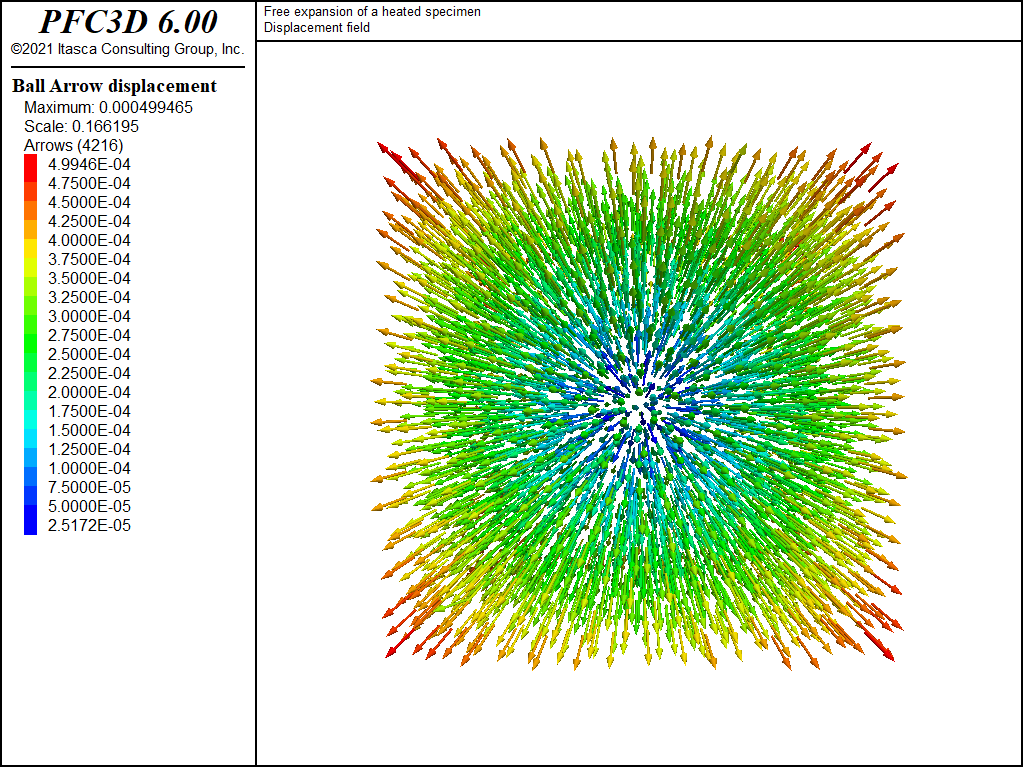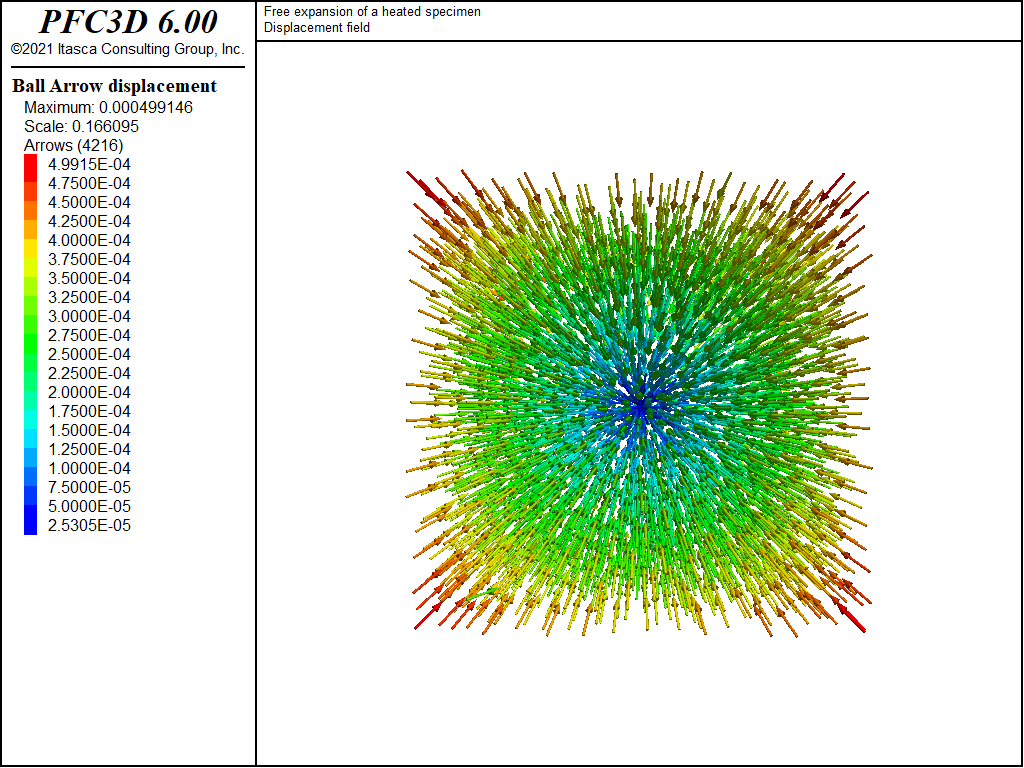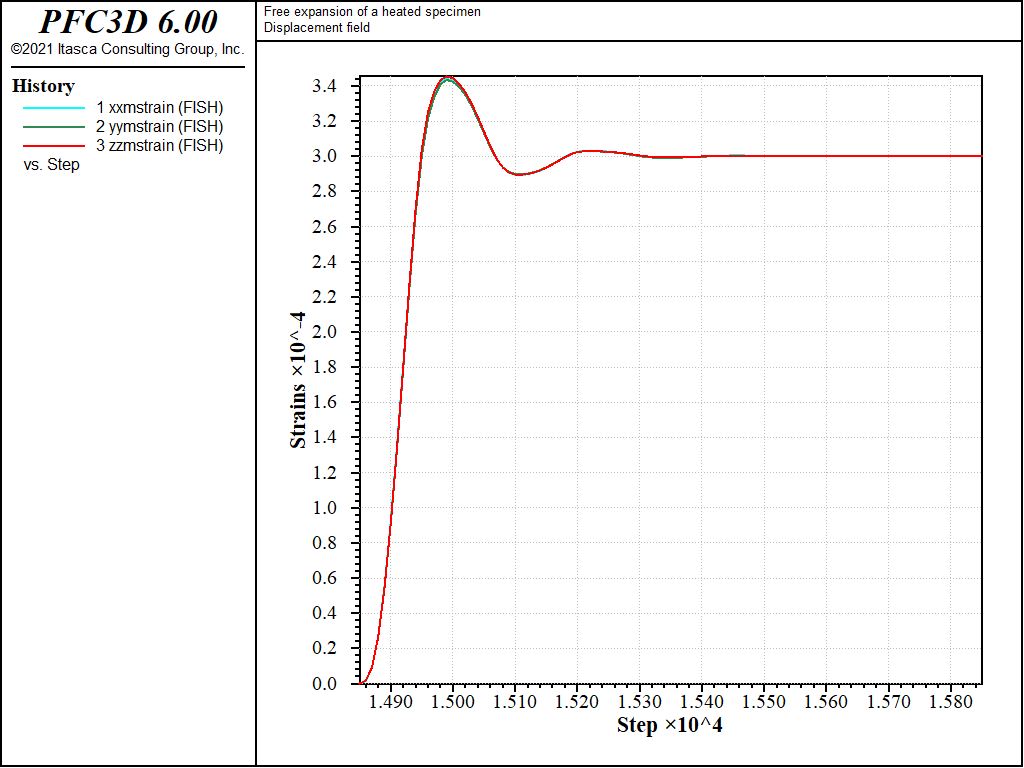Heated Specimen with Free Boundaries
| Verification Resources | |
|---|---|
| Data Files | Project: open “FreeExpansion.p3prj,”[1] in PFC3D |
A temperature change, \(\Delta T\), is applied to a cubic specimen with unconstrained boundaries. The thermally induced strains are measured and compared with analytical values for an isotropic elastic continuum.
Analytical Values
The stress-strain relation with thermally induced strain is given by Equation (1) ([Timoshenko1970b]):
where \(E\) and \(\nu\) are the Young’s modulus and the Poisson’s ratio, respectively. Also, \(\alpha_t\) is the coefficient of linear thermal expansion.
The analytical values for the thermally induced strains with free boundaries are given by Equation (2):
Model and Results
The file “free_expansion.p3dat” is used for this example. A 2 × 2 × 2 m specimen is created. It comprises approximately 4000 balls with uniform size distribution (radius range from 0.05 to 0.08 m), with a porosity of 0.36. Once the specimen is generated, contact bonds are installed at ball-ball contacts, the surrounding walls are deleted, and the specimen is brought to equilibrium.
The strains are measured using a measurement sphere with a radius of 0.95 m, centered within the specimen. In PFC, the particle thermal-expansion coefficient is the same as the coefficient of linear thermal expansion: \(\alpha_t\) = 3 × 10-6/°C, in this case.
The expected strains for \(\Delta T\) = +100°C are
The expected strains for \(\Delta T\) = -100°C are
Figure 1 and Figure 2 show displacement vectors resulting from the positive and negative temperature change; they show an isotropic expansion and isotropic contraction, respectively. Figure 3 and Figure 4 show histories of strain recorded during the expansion and contraction phases respectively.
The result of the simulation is in accordance with the analytical solution.
References
| [Timoshenko1970b] | Timoshenko, S. P., and J. N. Goodier. Theory of Elasticity, 3rd Ed. New York: McGraw-Hill, 1970. |
Endnote
| [1] | This file may be found in PFC3D under the “verfication_problems/constrained_expansion” folder in the Examples dialog ( on the menu). If this entry does not appear, please copy the application data to a new directory. (Use the menu commands . See the Copy Application Data section for details.) |
⇐ Data Files for “Transient Sheet” Verification | Data File for “Heated Specimen with Free Boundaries” Verification ⇒
| Was this helpful? ... | PFC 6.0 © 2019, Itasca | Updated: Nov 19, 2021 |




